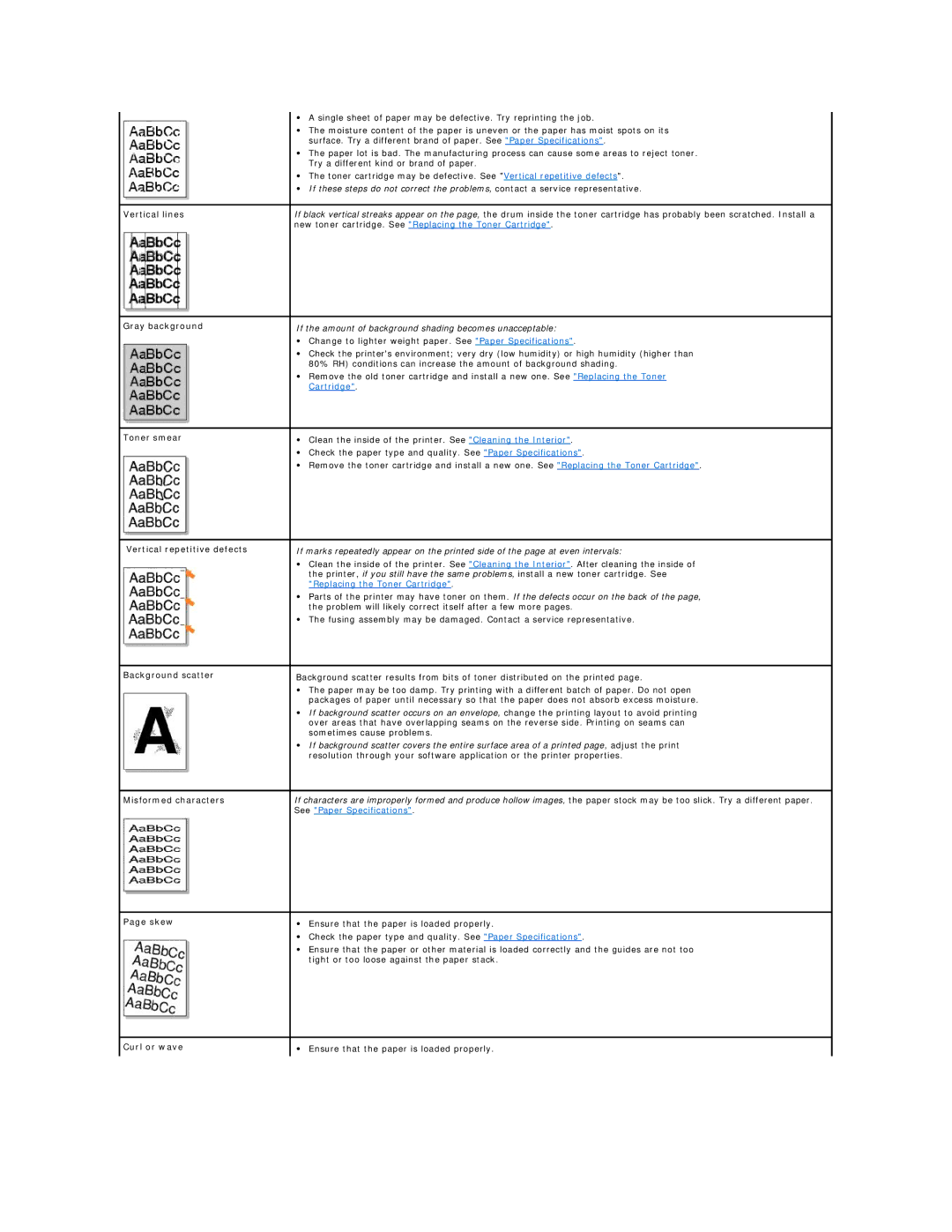
| • A single sheet of paper may be defective. Try reprinting the job. |
| • The moisture content of the paper is uneven or the paper has moist spots on its |
| surface. Try a different brand of paper. See "Paper Specifications". |
| • The paper lot is bad. The manufacturing process can cause some areas to reject toner. |
| Try a different kind or brand of paper. |
| • The toner cartridge may be defective. See "Vertical repetitive defects". |
| • If these steps do not correct the problems, contact a service representative. |
|
|
Vertical lines | If black vertical streaks appear on the page, the drum inside the toner cartridge has probably been scratched. Install a |
| new toner cartridge. See "Replacing the Toner Cartridge". |
|
|
Gray background | If the amount of background shading becomes unacceptable: |
| • Change to lighter weight paper. See "Paper Specifications". |
| • Check the printer's environment; very dry (low humidity) or high humidity (higher than |
| 80% RH) conditions can increase the amount of background shading. |
| • Remove the old toner cartridge and install a new one. See "Replacing the Toner |
| Cartridge". |
|
|
Toner smear | • Clean the inside of the printer. See "Cleaning the Interior". |
| • Check the paper type and quality. See "Paper Specifications". |
| • Remove the toner cartridge and install a new one. See "Replacing the Toner Cartridge". |
|
|
Vertical repetitive defects | If marks repeatedly appear on the printed side of the page at even intervals: |
| • Clean the inside of the printer. See "Cleaning the Interior". After cleaning the inside of |
| the printer, if you still have the same problems, install a new toner cartridge. See |
| "Replacing the Toner Cartridge". |
| • Parts of the printer may have toner on them. If the defects occur on the back of the page, |
| the problem will likely correct itself after a few more pages. |
| • The fusing assembly may be damaged. Contact a service representative. |
|
|
Background scatter | Background scatter results from bits of toner distributed on the printed page. |
| • The paper may be too damp. Try printing with a different batch of paper. Do not open |
| packages of paper until necessary so that the paper does not absorb excess moisture. |
| • If background scatter occurs on an envelope, change the printing layout to avoid printing |
| over areas that have overlapping seams on the reverse side. Printing on seams can |
| sometimes cause problems. |
| • If background scatter covers the entire surface area of a printed page, adjust the print |
| resolution through your software application or the printer properties. |
|
|
Misformed characters | If characters are improperly formed and produce hollow images, the paper stock may be too slick. Try a different paper. |
| See "Paper Specifications". |
|
|
Page skew | • Ensure that the paper is loaded properly. |
| • Check the paper type and quality. See "Paper Specifications". |
| • Ensure that the paper or other material is loaded correctly and the guides are not too |
| tight or too loose against the paper stack. |
|
|
Curl or wave | • Ensure that the paper is loaded properly. |
|
|
